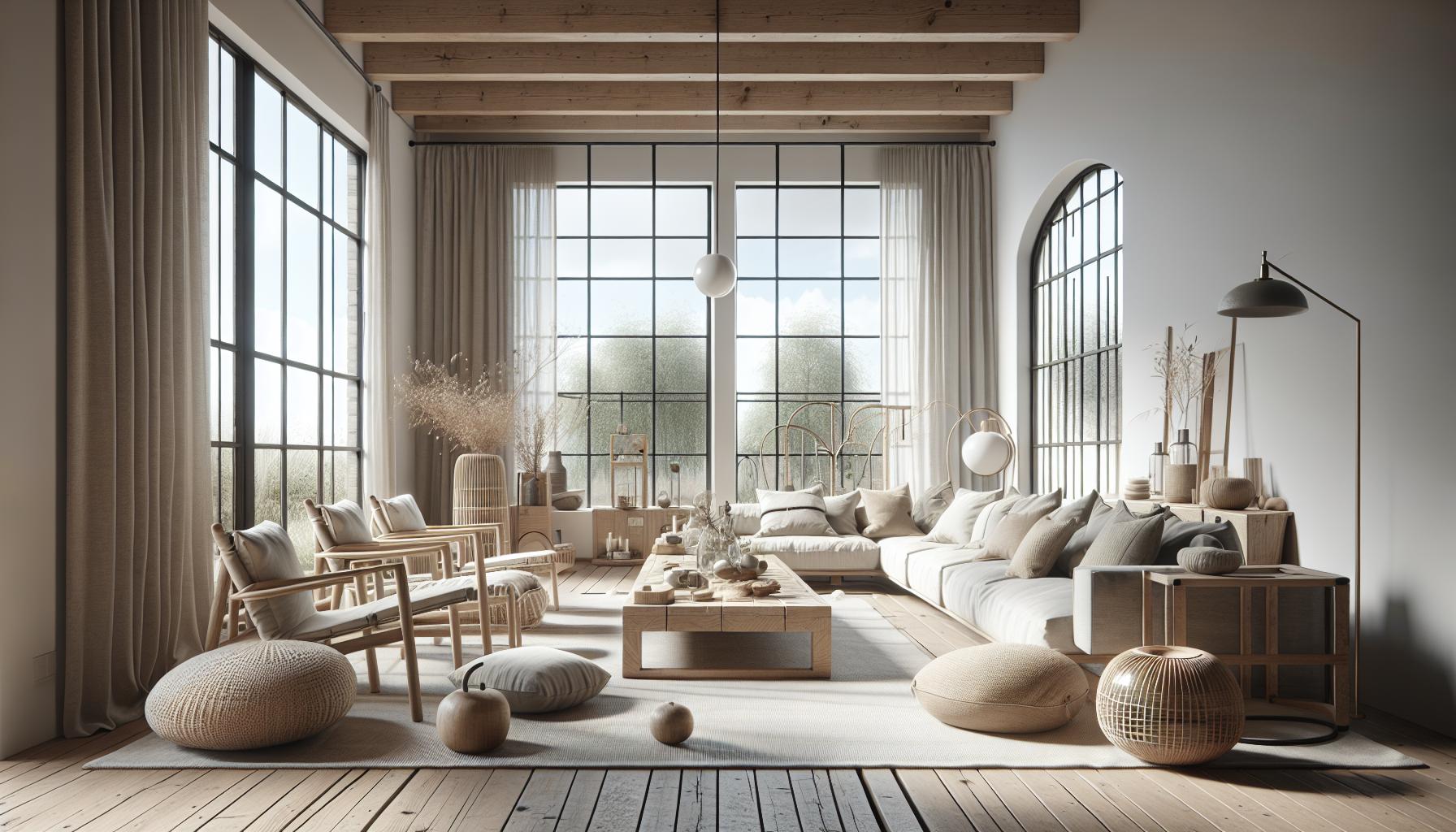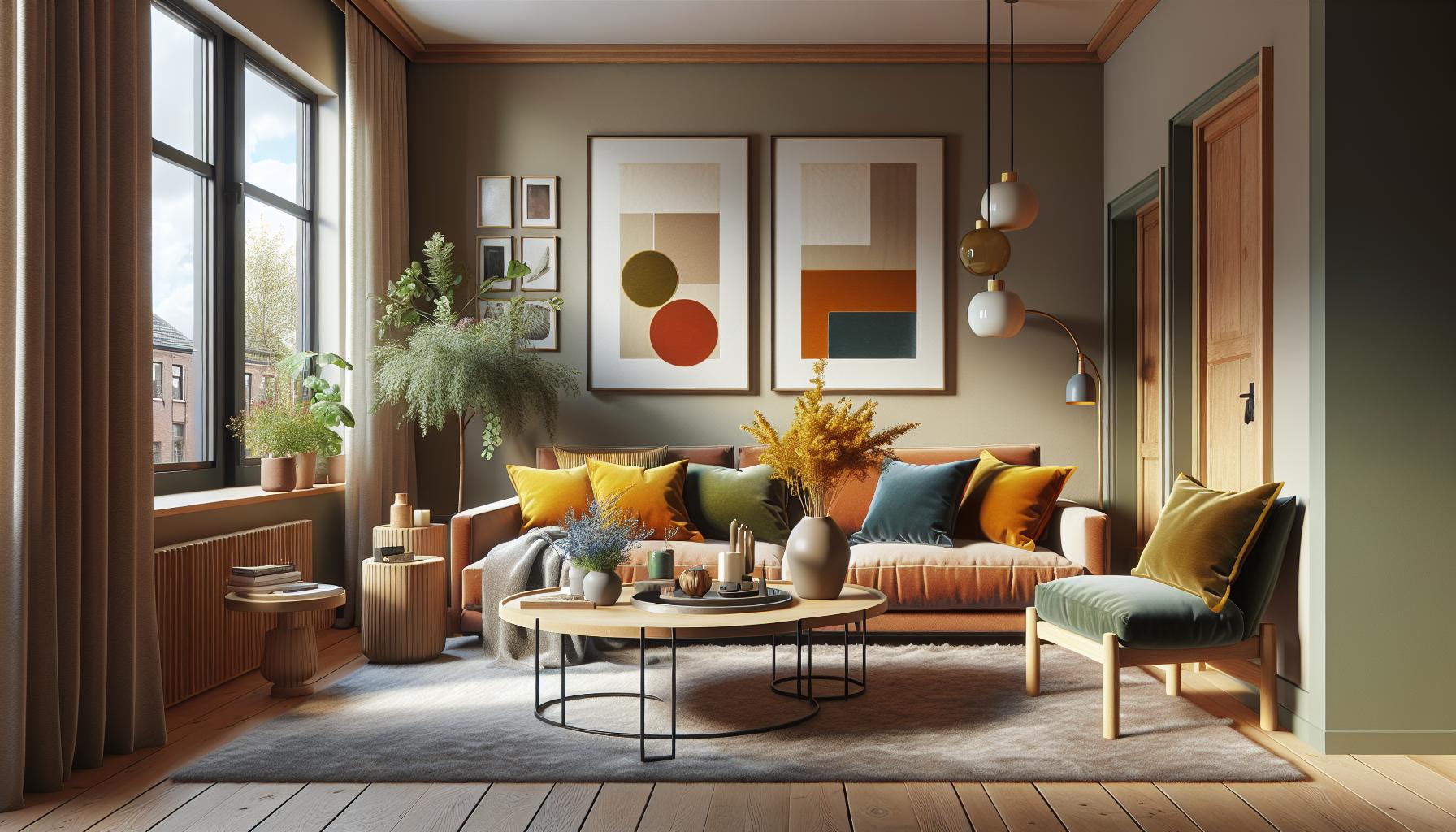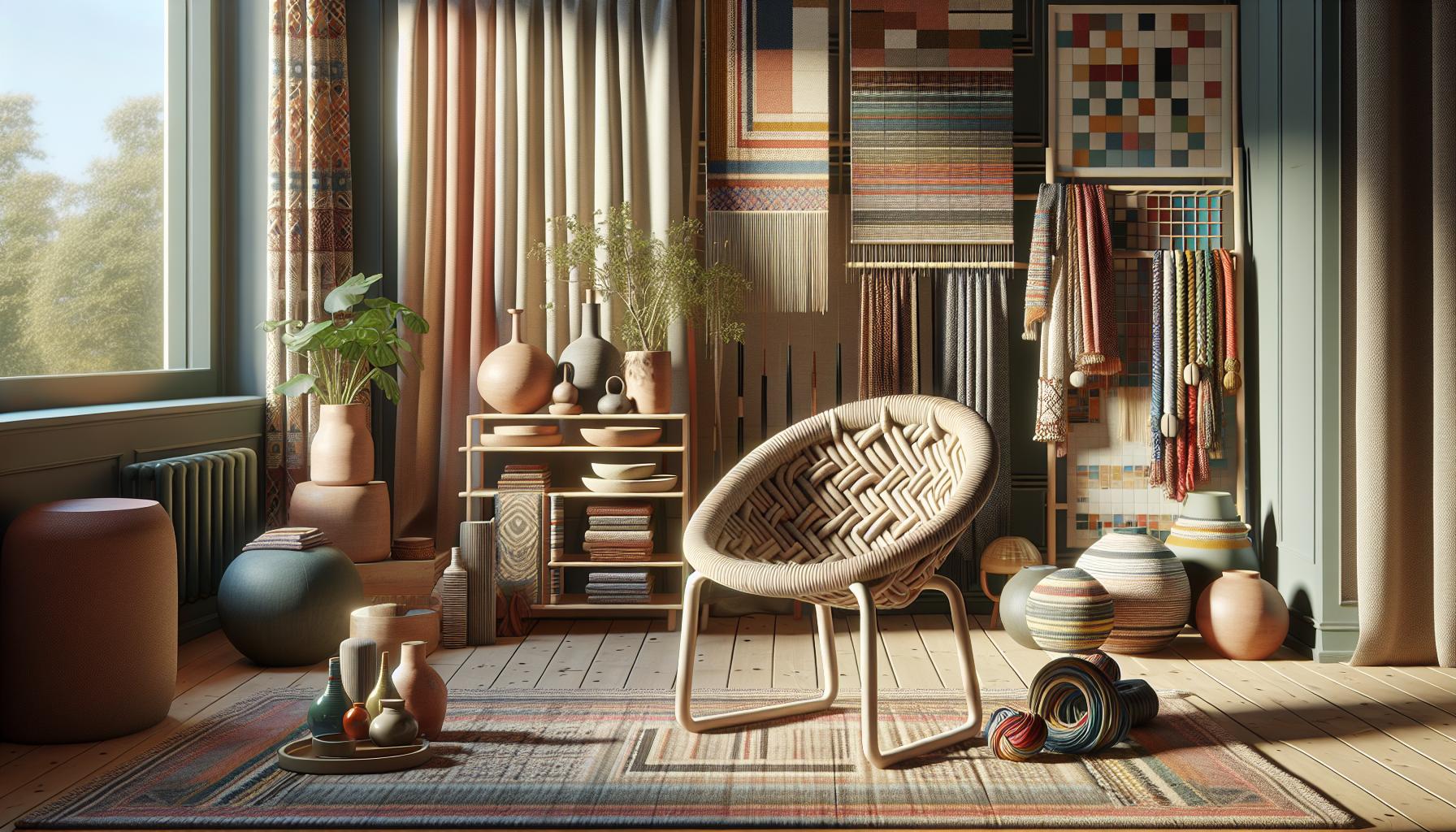Key Takeaways
- Minimalism is Key: Dutch design prioritizes clean lines and uncluttered spaces, promoting a sense of tranquility and calm in home decoration.
- Bold Color Accents: While emphasizing neutral tones, vibrant colors are strategically used to create visual interest and highlight key design elements.
- Sustainable Materials: A focus on eco-friendly resources like reclaimed wood and recycled metals underpins the contemporary Dutch design ethos, promoting responsible decorating practices.
- Craftsmanship Matters: Attention to quality and detail ensures longevity and timeless appeal in Dutch design, enhancing the aesthetic and functional value of home decor.
- Natural Light Integration: Maximizing natural light through large windows and open layouts creates bright and inviting spaces that enhance overall well-being.
- Biophilic Design Trends: The incorporation of natural elements, such as indoor plants, fosters a strong connection to nature, aligning with modern sustainability efforts in home decoration.
Dutch design has carved a unique niche in the world of home decoration, blending functionality with striking aesthetics. Known for its clean lines and minimalist approach, Dutch design embraces simplicity while celebrating bold colors and innovative materials. This distinctive style not only enhances the beauty of spaces but also promotes a sense of harmony and balance.
As trends evolve, the Dutch design ethos continues to inspire homeowners and decorators alike. From sustainable practices to the integration of nature, these trends reflect a deep appreciation for craftsmanship and a commitment to creating inviting environments. Discovering the latest Dutch design trends can transform any home into a stylish sanctuary that resonates with contemporary sensibilities.
Dutch Design Trends in Home Decoration
Dutch design trends in home decoration center on functionality, simplicity, and a strong connection to nature. Key elements include:
- Minimalism: Designs favor clean lines and uncluttered spaces, promoting a sense of calm.
- Bold Colors: Accents in vibrant shades contrast with neutral tones, enhancing visual interest.
- Innovative Materials: Use of sustainable resources, such as reclaimed wood and recycled metals, emphasizes eco-friendliness.
- Craftsmanship: Attention to detail and quality craftsmanship highlight the importance of enduring designs.
- Natural Light: Large windows and open layouts invite natural light, creating bright and airy environments.
Current trends also emphasize biophilic design, integrating plants and landscapes into interiors, fostering a serene atmosphere. As Dutch design evolves, its commitment to sustainability and innovation continues to inspire homeowners seeking stylish yet practical solutions.
Key Characteristics of Dutch Design

Dutch design emphasizes a seamless blend of functionality and aesthetics, showcasing simplicity and elegance. Its core principles include minimalism, the use of natural materials, and a commitment to sustainability.
Minimalism and Functionality
Minimalism defines Dutch design, promoting a clutter-free environment that emphasizes clean lines and essential elements. Spaces reflect tranquility, achieved through open layouts and an absence of excess ornamentation. Functionality plays a vital role, as designers create pieces that serve multiple purposes, ensuring practicality complements aesthetic appeal. This approach fosters balanced living spaces that promote well-being and enhance the overall quality of life.
Use of Natural Materials
Natural materials are fundamental to Dutch design. Materials like reclaimed wood and recycled metals feature prominently, aligning with sustainable practices. Designers frequently incorporate stone and organic textiles, providing a tactile experience that connects occupants to nature. This focus on authenticity not only enhances visual appeal but also contributes to eco-conscious living, reinforcing Dutch design’s commitment to creating harmonious and inviting environments.
Popular Color Palettes

Dutch design embraces a variety of color palettes that enhance simplicity while providing character. These palettes promote a welcoming atmosphere in home decoration.
Earthy Tones and Natural Hues
Earthy tones dominate Dutch design, reflecting a connection to nature. Shades like terracotta, warm beige, and soft greens create a grounded environment. These colors foster tranquility, making spaces feel inviting. Incorporating natural hues encourages the use of sustainable materials, such as wood and stone, harmonizing the interiors with their surroundings. The emphasis on organic colors enhances the calming, minimalist aesthetic prevalent in many Dutch homes.
Bold Accents and Contrasts
Bold accents and contrasts highlight Dutch design’s playful yet sophisticated nature. Vibrant colors like mustard yellow, deep blue, and rich red serve as striking focal points against neutral backdrops. This interplay creates visual interest in spaces, drawing attention to key elements like artwork or furniture. Designers often apply these accents through textiles, decorative pieces, or feature walls, ensuring the elegance of minimalism is preserved. This approach allows for personal expression while maintaining the overall serene atmosphere characteristic of Dutch interiors.
Influential Dutch Designers

Dutch designers play a significant role in shaping home decoration trends, promoting innovation and sustainability. Their work reflects a blend of historical influences and contemporary design principles.
Contemporary Icons
Renowned Dutch designers like Hella Jongerius and Marcel Wanders push boundaries in home decor. Hella Jongerius combines traditional craftsmanship with modern technology, creating functional yet artistic pieces. Notable works include her unique textile designs that merge color and texture. Marcel Wanders is celebrated for his whimsical approach, evident in products like the Knotted Chair, which fuses creativity with function. Both designers emphasize sustainability, often utilizing recycled materials and eco-friendly practices in their designs. Additionally, designers like Maarten Baas gain recognition for their playful take on furniture, challenging conventional aesthetics through innovative concepts.
Historical Influences
Historical Dutch design draws inspiration from movements like De Stijl and Dutch Modernism. De Stijl, founded in 1917, emphasizes geometry and primary colors, influencing contemporary design through its core principles. Pioneers like Piet Mondrian and Gerrit Rietveld introduced simplicity and abstraction, shaping minimalist design in the Netherlands and beyond. The influence of the Dutch Golden Age remains relevant, showcasing an appreciation for craftsmanship and attention to detail. Elements like ornate woodwork and intricate ceramics persist in modern interpretations, ensuring a deep-rooted connection to the past. This blend of historical context and contemporary innovation is pivotal in defining Dutch design aesthetics today.
Sustainability in Dutch Design
Sustainability stands as a cornerstone in Dutch design, influencing both aesthetics and functionality in home decoration. Designers prioritize eco-friendly materials, including reclaimed wood and recycled metals, to reduce environmental impact while enhancing interior spaces.
Designers often implement innovative practices that promote resource efficiency. For instance, furniture and decor made from sustainable sources, such as bamboo and organic textiles, exemplify this trend. Many pieces feature versatile designs that minimize waste while maximizing usability.
Craftsmanship plays a vital role in the sustainability movement within Dutch design. Artisans focus on quality, durability, and timeless appeal, leading to fewer replacements over time. This approach reinforces a commitment to environmental stewardship by extending the lifecycle of products.
Additionally, the integration of biophilic design principles encourages natural elements within interiors. Incorporating indoor plants not only improves air quality but also fosters a strong connection to nature, aligning with the environmentally conscious ethos of Dutch design.
Recent offerings from leading designers further emphasize sustainability’s importance. Collections that utilize upcycled materials and local craftsmanship highlight the movement toward responsible production while maintaining aesthetic integrity. This commitment to sustainability ensures that Dutch design remains relevant and appealing in today’s eco-focused market.
The use of earthy tones and natural materials reflects a deeper understanding of the relationship between design and nature. By adopting a holistic approach that merges sustainability with style, Dutch design continues to inspire and challenge traditional notions of home decoration.
Dutch Design Trends In Home Decoration
Dutch design trends in home decoration exemplify a harmonious blend of sustainability and aesthetics. This approach not only enhances the beauty of spaces but also promotes a mindful lifestyle. By prioritizing natural materials and innovative practices, these trends inspire homeowners to create environments that reflect personal style while respecting the planet.
As more people embrace minimalist living and biophilic design, the influence of Dutch designers will continue to shape the future of interior decoration. The commitment to craftsmanship and eco-friendly practices ensures that Dutch design remains both timeless and relevant. Adopting these principles can transform any home into a stylish sanctuary, fostering tranquility and connection to nature.